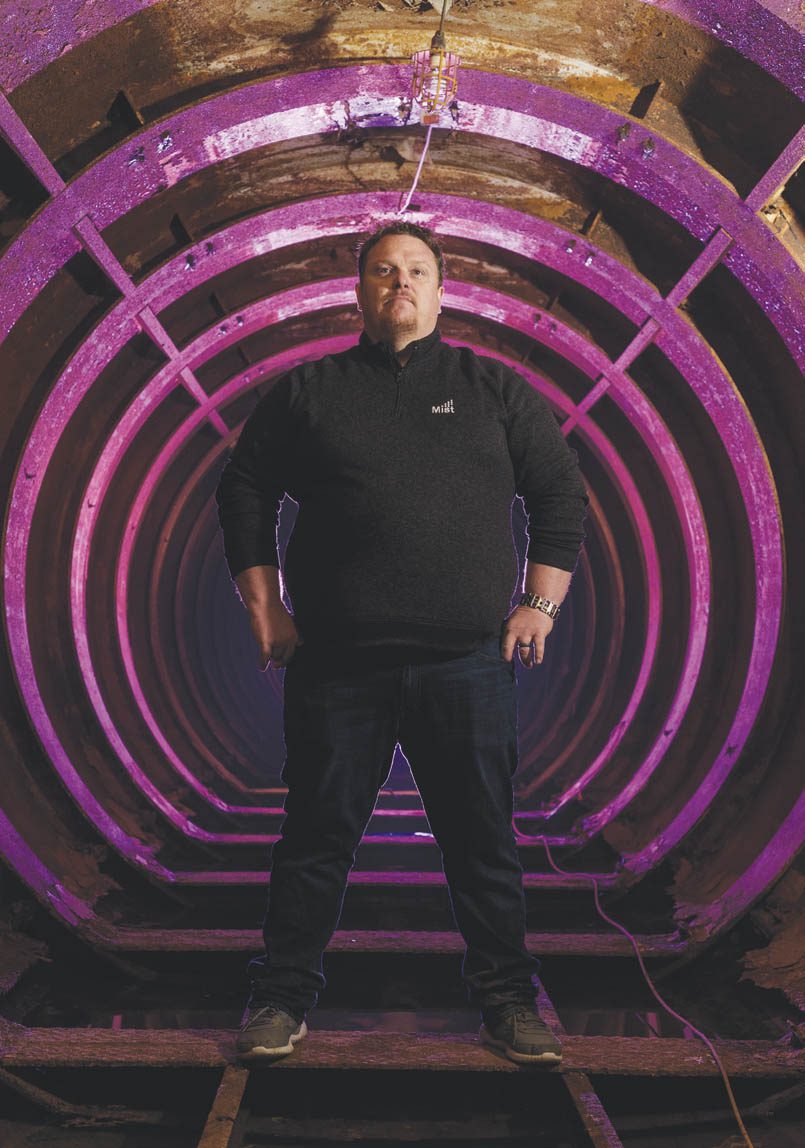22 Mar 2019 Missile silo makeover
by Donna Benton
“When people see what I’m doing here, either they think I’m crazy or they think it is the coolest thing ever,” said G.T. Hill. After spending an afternoon with G.T. exploring his heavy metal modifications and the rusty recesses of his Cold War era missile silo turned-upscale living and event space along Highway 36 near Vilonia, I think he IS a little crazy, AND it’s the coolest thing ever!
If you lived in Central Arkansas in the 1960s and 1970s, you probably passed by the unassuming angled steel post entryway of one of these missile sites, without giving much thought to the massive nuclear rocket lying in wait just beneath a meadow of waving native grasses. The nine megatons of thermonuclear warhead was on a seven-story rocket with a range of 5,500 miles, to be specific! I don’t know exactly what megatons are, but it was one of the big ones, meant to be a deterrent to evil empires, the kind where the president speaks a secret code into the red briefcase phone, and two guys down in the launch room turn special keys in unison…that kind of bomb! A Titan II Intercontinental Ballistic Missile.

Local folks didn’t give much thought to these missile bases until 1980, when workers at the Damascus site infamously dropped a tool into the launch bay which ruptured a fuel tank and caused an explosion that catapulted the warhead through the 700-ton silo door and into a field nearby. Luckily, the warhead did not deploy, and we all remain to tell the tale.
There were 18 of these sites around Central Arkansas. I don’t like to think too much about why the government thought our relatively rural area would be a good place to situate these mammoth nukes, but thankfully the Titan II’s were decommissioned in 1981. Under the terms of a disarmament treaty with Russia, the sites were destroyed.
The tops of the silos were imploded with explosives and the launch bay and entry shaft were filled with dirt and debris and closed forever… at least until G.T. Hill came along.
Several years ago, G.T acquired one of the decommissioned Titan II sites in Faulkner County and he set about painstakingly resurrecting and restoring the tunnels and chambers that had been buried beneath the earth for decades. The project was much like an archaeological dig. The access portal and rocket chamber doors had been destroyed, buried and covered over in grass, so the first challenge was finding the thing. Once the thee-story-deep access portal was located, G.T. and his crew began the arduous process of removing the fill dirt, rocks and giant chunks of concrete that filled the 35-foot-deep entry shaft.
Eventually, enough of the fill and debris had been removed from the access portal to reach the entry door 35 feet below the surface. The six-ton hardened steel door was sealed closed with a giant hydraulic lock. This door was made to withstand a nuclear blast from the outside or from within in case of an accident. Opening the door took some serious engineering and some heavy equipment, but on Oct. 13, 2010, G.T. and his crew opened the door to the silo for the first time in 35 years.
Opening the silo door for the first time would be exciting in its own right, but the chamber behind the door was flooded and 250 tons of water blasted through the open door in seconds and flooded the access portal where the workers were. The crew had to be whisked to safety in an excavator bucket. That night, still shaken from the flooded door opening, G.T. and his crew explored the silo for the first time. “Walking through the dark flooded silo for the first time was the most scared I have ever been” G.T. recalled. “I thought what have I gotten myself into?”

After untold investment and countless man hours of pumping water, dirt and mud removal, cleaning, sandblasting, painting and rebuilding, along with scrapping all the abandoned parts and equipment necessary to manage a nuclear missile, but not needed for G.T.’s well-appointed nuclear hideaway, he is ready to share his secret subterranean sanctuary with the rest of the world – at least until the zombie apocalypse, then you are on your own.
The launch control center is now a three-story meeting room and event space that is available for meetings, parties, unique weddings or any kind of event. Along with hosting special events, Titan Ranch offers team-building activities like sporting clays, axe throwing, UAV (drone) operation and even heavy equipment operating.
If you want to hear more about the heartaches and victories of turning a buried nuclear missile silo into an upscale living and event space, complete with some near-death drama, the whole process is documented in a series of detailed videos at titanranch.com.
- Mardi on! - March 31, 2024
- Bubbles and blues - March 31, 2024
- Wish listing - March 31, 2024











